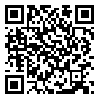Sun, Dec 28, 2025
Volume 16, Issue 1 (Winter 2026)
PTJ 2026, 16(1): 73-82 |
Back to browse issues page
Download citation:
BibTeX | RIS | EndNote | Medlars | ProCite | Reference Manager | RefWorks
Send citation to:



BibTeX | RIS | EndNote | Medlars | ProCite | Reference Manager | RefWorks
Send citation to:
Ebrahimi E, Tabatabaee S M, Dadarkhah A, Najafi S. NASM-based Core Stability Training Using Taekwondo Movements in Male Individuals With Hyperlordosis. PTJ 2026; 16 (1) :73-82
URL: http://ptj.uswr.ac.ir/article-1-733-en.html
URL: http://ptj.uswr.ac.ir/article-1-733-en.html
1- Clinical Biomechanics and Ergonomics Research Center, Aja University of Medical Sciences, Tehran, Iran.
Abstract: (1106 Views)
Purpose: Hyperlordosis is a postural condition characterized by excessive lumbar spine curvature, often associated with pain and musculoskeletal dysfunction. This study aimed to investigate NASM-based core stability training using taekwondo (TKD) movements in male individuals with hyperlordosis.
Methods: This quasi-experimental research included 30 lordotic soldiers from the AJA University of Medical Sciences in Tehran, divided into the TKD group (n=15) and a non-TKD group (n=15). Before and after an 8-week protocol, lumbar lordosis angle, pain levels, and abdominal muscle endurance were measured via spinal mouse (SM) device (IDIAG M360®, Fehraltorf, Switzerland), visual analogue scale (VAS), and a sit-up test, respectively. Inferential statistics were analyzed using ANCOVA. Additionally, paired t-tests were conducted for within-group comparisons.
Results: A significant difference was found between the two groups in the degree of hyperlordosis (P<0.000), VAS score (P<0.000), and abdominal muscle endurance test (P<0.000), even when accounting for the pre-test effect as a covariate. This indicates that incorporating TKD movements with core stability exercises had an impact.
Conclusion: TKD, with its dynamic, full-body movements, may prove more effective than isolated core strengthening exercises in reducing pain, lumbar lordotic angles, and improving abdominal muscle endurance in individuals with hyperlordosis. The enhanced efficacy of TKD in these variables can likely be attributed to its ability to engage multiple muscle groups, improve neuromuscular coordination, and address the complex postural and muscular imbalances associated with hyperlordosis.
Methods: This quasi-experimental research included 30 lordotic soldiers from the AJA University of Medical Sciences in Tehran, divided into the TKD group (n=15) and a non-TKD group (n=15). Before and after an 8-week protocol, lumbar lordosis angle, pain levels, and abdominal muscle endurance were measured via spinal mouse (SM) device (IDIAG M360®, Fehraltorf, Switzerland), visual analogue scale (VAS), and a sit-up test, respectively. Inferential statistics were analyzed using ANCOVA. Additionally, paired t-tests were conducted for within-group comparisons.
Results: A significant difference was found between the two groups in the degree of hyperlordosis (P<0.000), VAS score (P<0.000), and abdominal muscle endurance test (P<0.000), even when accounting for the pre-test effect as a covariate. This indicates that incorporating TKD movements with core stability exercises had an impact.
Conclusion: TKD, with its dynamic, full-body movements, may prove more effective than isolated core strengthening exercises in reducing pain, lumbar lordotic angles, and improving abdominal muscle endurance in individuals with hyperlordosis. The enhanced efficacy of TKD in these variables can likely be attributed to its ability to engage multiple muscle groups, improve neuromuscular coordination, and address the complex postural and muscular imbalances associated with hyperlordosis.
Type of Study: Research |
Subject:
Sport injury and corrective exercises
Received: 2025/01/28 | Accepted: 2025/05/24 | Published: 2026/01/1
Received: 2025/01/28 | Accepted: 2025/05/24 | Published: 2026/01/1
Send email to the article author
| Rights and permissions | |
 |
This work is licensed under a Creative Commons Attribution-NonCommercial 4.0 International License. |






